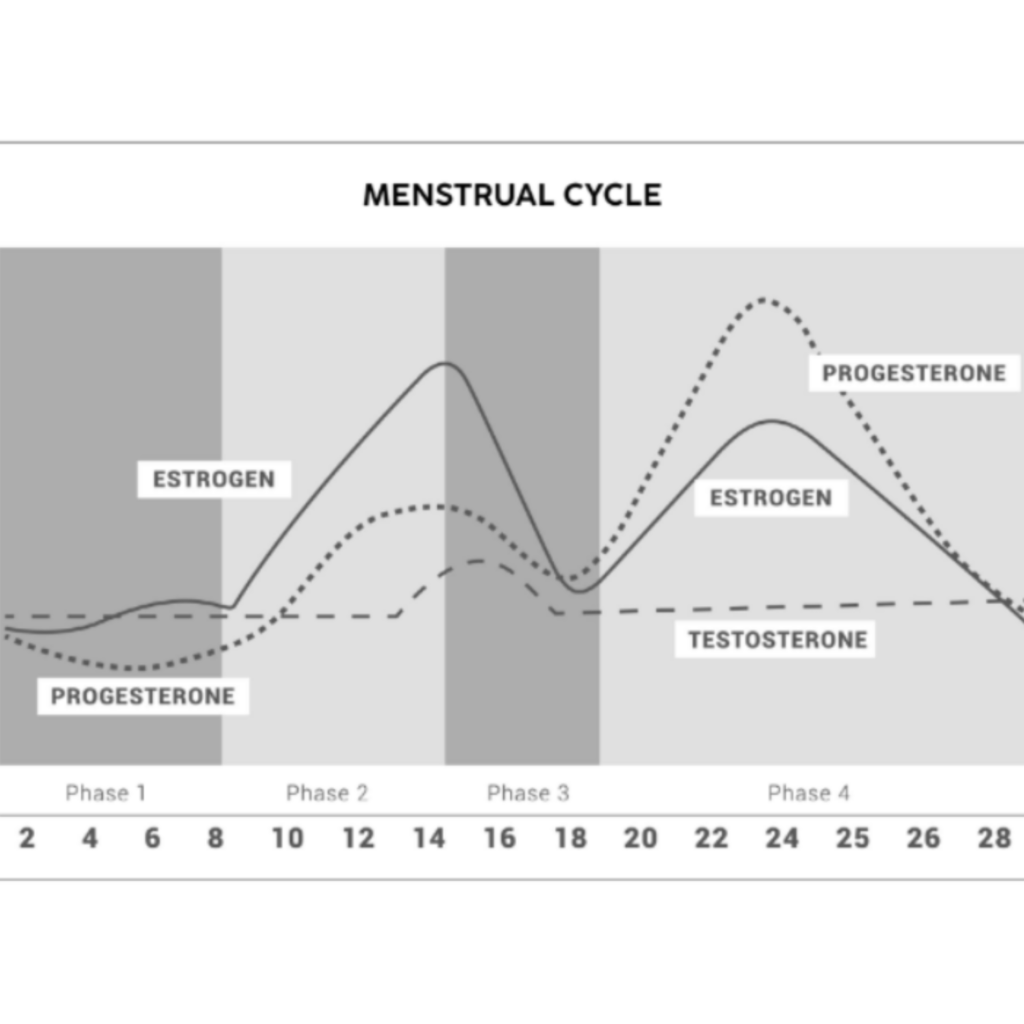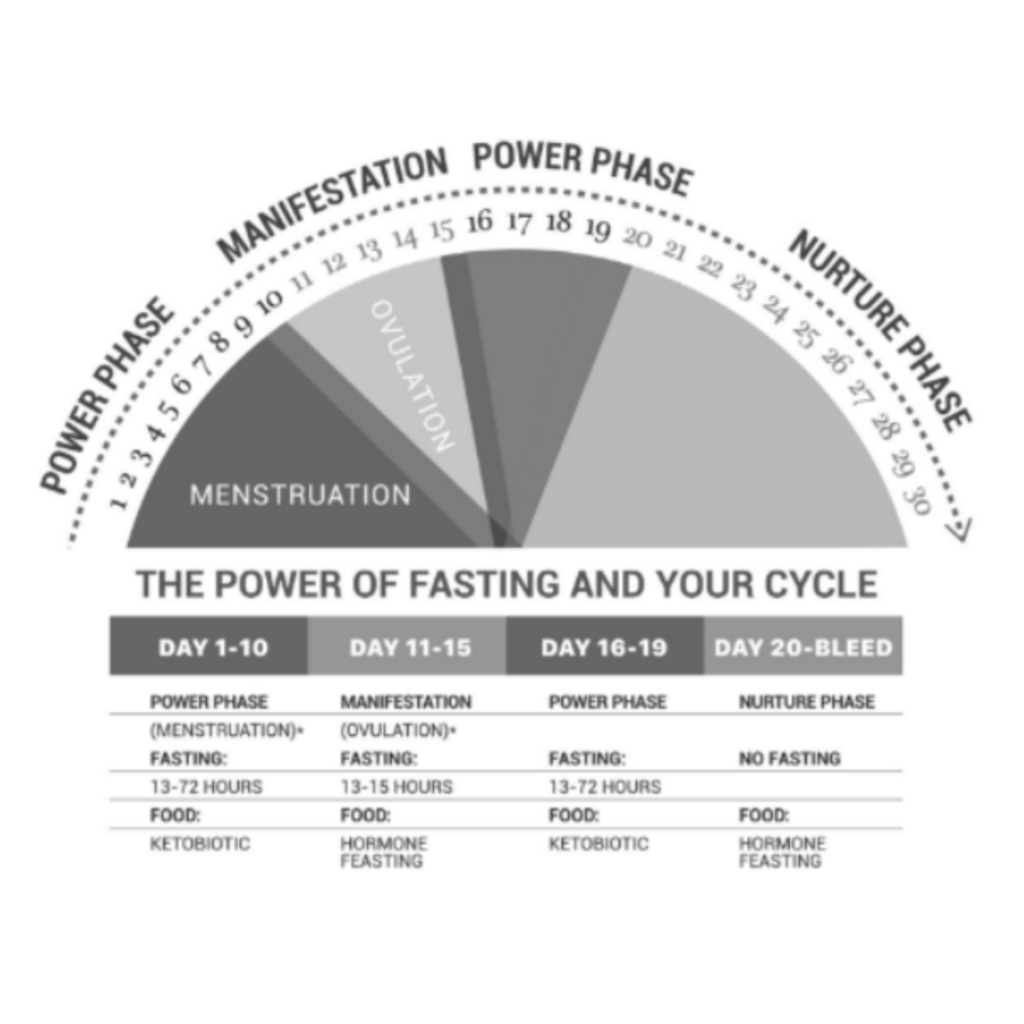How to align with your body’s natural rhythms for more energy, ease, and balance.
Why Midlife Women Need a New Approach
If you’re in your 40s or 50s and wondering why the tools that used to work suddenly don’t — you’re not imagining it. Your hormones are shifting. You may feel more tired, anxious, foggy, or overwhelmed. Cravings increase. Sleep gets disrupted. And your cycle — if you still have one — may be unpredictable.
This season of life isn’t about pushing harder. It’s about working with your body, not against it. That’s where cycle syncing in midlife comes in — a powerful, practical way to support your hormones and feel like yourself again.
Dr. Mindy Pelz calls this approach the Fasting Cycle, but it’s really a healing cycle — one that helps you understand when your hormones are rising, when they’re falling, and what your body needs most in each phase. You’re not stuck. You’re not broken. You’re evolving — and learning to honor this rhythm is the key to feeling like yourself again.
In this post, we’ll cover:
- Three key hormones that influence your mood, metabolism, sleep, and energy.
- The 4 phases of your hormonal cycle.
- How to live in sync with your cycle.
- How to start syncing, even if your cycle is irregular or missing.

Meet 3 Key Hormones
Before you can sync with your cycle, it helps to understand the hormones you’re working with. These three key players — often called your sex hormones — influence everything from mood and motivation to metabolism, sleep, and mental clarity.
- Estrogen – The queen bee and the extrovert. Estrogen boosts brain clarity, mood, fat metabolism, and bone strength. It activates feel-good neurotransmitters like serotonin and dopamine, helping you feel motivated and emotionally resilient. In midlife, levels become unpredictable — sometimes spiking, other times crashing.
- Progesterone – The sweet introvert. This calming, grounding hormone supports deep sleep, reduces anxiety, and soothes inflammation. It’s often the first to decline in perimenopause, which can leave you feeling wired, restless, or irritable.
- Testosterone – Your get-it-done hormone. It fuels drive, energy, strength, libido, and confidence. Though it declines more gradually, you may still notice a drop in stamina and motivation as levels fall.
By the time we reach perimenopause, many of us are already disconnected from our natural hormonal rhythm either because we were never taught how our hormones work, or because we spent years on birth control, which flattened those natural fluctuations. Then perimenopause arrives and adds even more unpredictability.
That’s why cycle syncing in midlife can look different. Even if your period is irregular or missing, your body continues to follow internal rhythms that can guide how you eat, move, rest, and plan your days. This is what makes syncing such a powerful tool at this stage of life. You’re learning how to reconnect with your body and respond with more clarity and care.
Want to dive deeper into these hormones? Check out my blog post: How to Naturally Balance Key Hormones for Better Health.

The 4 Phases
To make the hormonal cycle easier to understand and apply, Dr. Mindy Pelz created four simple, relatable phase names. Each reflects what your body is doing and what it needs during that time. Even if your cycle is irregular or missing, syncing with these four phases can help you align your habits with your body’s natural rhythm.
Here’s a breakdown of the four phases:
| Phase | What It Supports | Hormones Involved |
| Power Phase 1 (Days 1–10) | Strength + Muscle Building | All hormones are low; estrogen begins to rise |
| Manifestation Phase (Days 11–15) | Brain Power + Detox | All three hormones are present. Estrogen peaks, testosterone surges, slight progesterone rise. |
| Power Phase 2 (Days 16–19) | Focus + Endurance | Estrogen drops, progesterone begins to rise. |
| Nurture Phase (Days 20–28) | Rest + Rejuvenation | Progesterone dominates, then all hormones drop as you approach bleed. |
Each phase brings unique strengths and needs. Once you understand the rhythm, you can begin shaping your lifestyle around your hormones instead of expecting your body to keep up with a one-size-fits-all routine.
If you’re on hormonal birth control, your body isn’t moving through these phases in the same way. Synthetic hormones manipulate estrogen and progesterone, overriding natural fluctuations. In the section, “What If Your Cycle Is Irregular or Missing”, you’ll find tips for syncing even if your cycle is irregular, missing, or influenced by birth control.

How to Live in Sync with Each Phase
Once you’re familiar with the four phases, you can start aligning your food, fasting, movement, and daily habits with what your body needs. Cycle syncing in midlife is about working with these rhythms so you can feel more balanced and in control.
Let’s take a closer look at how to live in sync with each phase:
Power Phase 1 (Days 1–10)
This is when you can power up on your health tools — longer fasts, strength training, and focused goal setting.
What’s happening: Estrogen is just beginning to rise. Hormones are low and you’re metabolically primed to go hard.
Support yourself with:
- Food: Eat lower net carbs, high in healthy fats and clean protein. Include leafy greens, cruciferous veggies, broths, and fiber.
- Fasting: This is a great time for longer fasts (e.g., 17+ hours), more aggressive metabolic switching, and even trying extended fasts if you’re experienced.
- Movement: Go for strength training, weight lifting, or high-intensity workouts. You have the capacity for power.
- Lifestyle: This is the time to push. Tackle big goals, plan ahead, or take on mentally demanding work. Your brain is primed for action.
Manifestation Phase (Days 11–15)
This is your superpower phase — you’re sharp, social, and hormonally set up to manifest big things.
Support yourself with:
- Food: Shift to higher net carbs and maintain protein and healthy fats. Focus on gut and liver support with fiber-rich foods, leafy greens, fermented foods, and bitter veggies like arugula and dandelion greens.
- Fasting: Keep fasts 15 hours or less to avoid triggering detox symptoms. Estrogen is peaking, and this is a time to support gentle clearance, not deep autophagy.
- Movement: You may feel especially strong, focused, and motivated in this phase. If your body feels good, this can be a great time for more intense or empowered workouts — just be sure to support detox with hydration, fiber, and rest when needed.
- Lifestyle: This is your “get it done” phase. Your brain is sharp, and your communication skills are enhanced — making it a great time for difficult conversations, presentations, or collaborations. Avoid alcohol to support detoxification.
Power Phase 2 (Days 16–19)
This is a strong and steady phase — you can double down on healthy habits, strength, and structure.
Support yourself with:
- Food: Return to ketobiotic — keep carbs lower to remain insulin sensitive, focus on clean proteins and healthy fats.
- Fasting: You can return to longer fasts (e.g., 17+ hours) or moderate fasts depending on your energy.
- Movement: Excellent for strength training or endurance. You’re physically resilient here.
- Lifestyle: Stick to routines, build consistency, and stay grounded. Your body craves structure and progress.
Nurture Phase (Days 20–Bleed)
This is your time to soften, rest, and nourish. Progesterone wants you to slow down and care deeply for yourself.
Support yourself with:
- Food: Eat hormone feasting-style meals. Bring in root veggies, tropical fruits, sweet potatoes, quinoa, and wild rice. Add magnesium-rich foods like dark chocolate.
- Fasting: Avoid long fasts — cap at 13 hours or skip fasting altogether. Your body needs glucose and rest.
- Movement: Gentle is best. Think walks, stretching, yin yoga. Avoid high-intensity training.
- Lifestyle: Prioritize rest and sleep. Slow down. Say no more often. Journal, create calm, and focus inward.
Each phase is a chance to connect with your body and give it what it needs. Even syncing just one area can make a meaningful difference. With time, you’ll learn to trust your rhythm and make choices that feel good and sustainable.

How to Start Syncing with the Your Cycle
Wondering where to start? Syncing with your cycle doesn’t have to be complicated. Here’s a simple way to begin:
1. Know where you are in your cycle.
If you’re already tracking — great. Use your app or journal to figure out which phase you’re in. Not sure? Apps like Flo, Clue, or MyFLO can help you spot patterns, even if your cycle isn’t regular. If your cycle is irregular or missing, we’ll cover that in the next section.
2. Match your food, fasting, movement, and lifestyle to your phase.
Use the guidance in the previous section to support your body based on where you are in your cycle.
3. Start with one area and make it easy.
Begin with what feels most manageable. For many women, food is the easiest entry point. Try adjusting your meals first, then layer in fasting or movement when you’re ready.
4. Protect your nervous system.
Syncing should feel supportive, not stressful. If it starts to feel like pressure, scale back. Chronic stress is one of the biggest disruptors of hormone balance, so give yourself space and grace.
Cycle syncing in midlife is about making thoughtful, supportive changes that meet your body where it is, one phase at a time.
What If Your Cycle Is Irregular or Missing?
If your cycle is unpredictable or completely gone, you’re not alone. You don’t need a perfect 28-day cycle to tap into the wisdom of your hormones or start syncing with your body.
Start by tracking your symptoms
Pay attention to how your energy, mood, sleep, and cravings shift throughout the month. Over time, you may begin to notice a rhythm even if it doesn’t follow a textbook pattern.
- Feeling energized and mentally clear for several days? That could reflect your version of the Power or Manifestation phase.
- Hitting a wall and craving rest or comfort foods? That might signal your body’s Nurture phase.
Tracking for just one or two months can give you valuable insights. Apps like Flo or Clue let you log not just your period but also symptoms like mood changes, cravings, and sleep quality — helping you uncover your unique rhythm.
Consider syncing with the moon
If your cycle isn’t showing up, the lunar cycle can serve as a gentle guide. This adds structure when your hormones aren’t giving clear signals.
- New Moon = Day 1 (Power Phase 1)
- Full Moon = Day 14 (Manifestation Phase)
What if you’re on hormonal birth control?
Hormonal birth control overrides your body’s natural hormone fluctuations. Synthetic hormones keep estrogen and progesterone steady, so you won’t move through the four phases in the same way.
You can still benefit from many of the strategies in this post, especially those that support blood sugar balance, stress reduction, and nervous system health. You might also try logging how your body responds to different foods, movement, and rest throughout the month. Even without a natural cycle, your body still follows internal rhythms.
If you’re thinking about coming off birth control and want to reconnect with your natural rhythm, give yourself time. It may take a while for your hormonal signals to reestablish. A coach or health provider can support you during the transition.

Final Thoughts: Own Your Health, One Phase at a Time
You’re not broken — you’re evolving. And when you start working with your hormones, everything begins to shift. Cycle syncing in midlife is about listening, responding, and supporting your body with intention.
Whether your cycle is somewhat regular or you’re navigating the ups and downs of perimenopause, your body is still communicating with you. You can feel better, think more clearly, and reconnect with your energy and calm.
Ready to take the next step? My free 7-Day Detox video course is a gentle reset designed for women in perimenopause and midlife. Each day, you’ll get a short 3–5 minute video with practical tips to help you reduce overwhelm, support your hormones, and feel more in control — no matter where you are in your journey. Download here.
You’ll also be added to my email list, where I share ongoing tools, encouragement, and hormone-friendly tips to help you thrive.
Want more tips and daily support for navigating perimenopause with confidence? Follow me on Instagram for daily support on navigating perimenopause with confidence.
Want personalized guidance?
As a certified Fasting Lifestyle Coach trained by Dr. Mindy Pelz, I help women use fasting and food to balance hormones, reduce overwhelm, and feel like themselves again without extreme diets or rigid plans.
If you’re ready for support that’s rooted in science and built around your life, book a free mini 1:1. We’ll talk about where you’re at, where you’re stuck, and how to take that first step toward thriving.
You have more power than you’ve been told. This is your time to tune in, take action, and own your health — one small, supportive step at a time.
The content provided in this post is for informational purposes only and is not intended to be a substitute for professional medical advice, diagnosis, or treatment. Always seek the advice of your physician or other qualified health provider with any questions you may have regarding a medical condition. Never disregard professional medical advice or delay in seeking it because of something you have read in this post.













+ Show / Hide Comments
Share to: